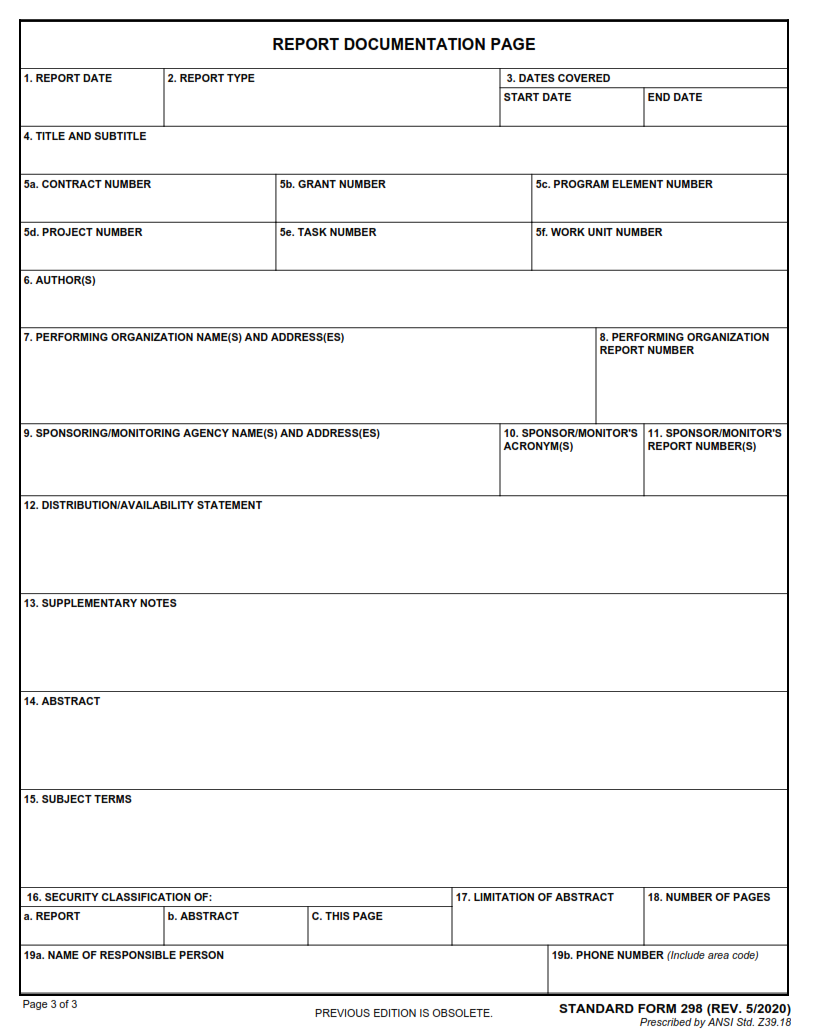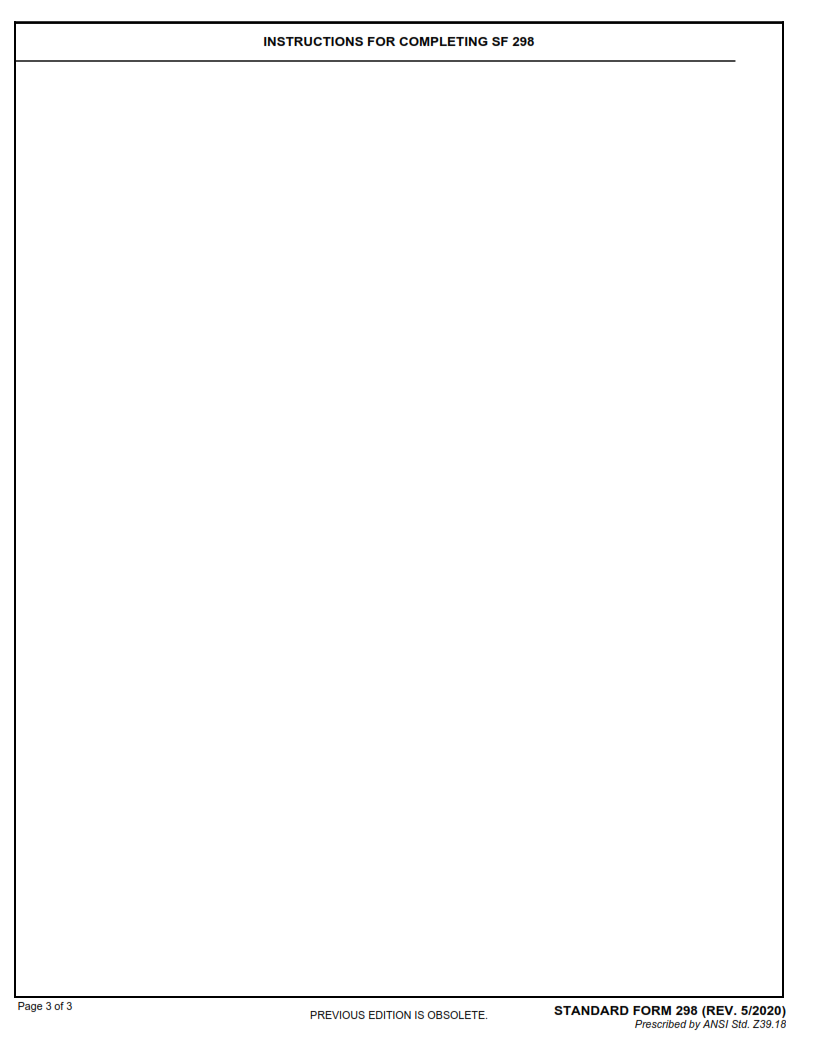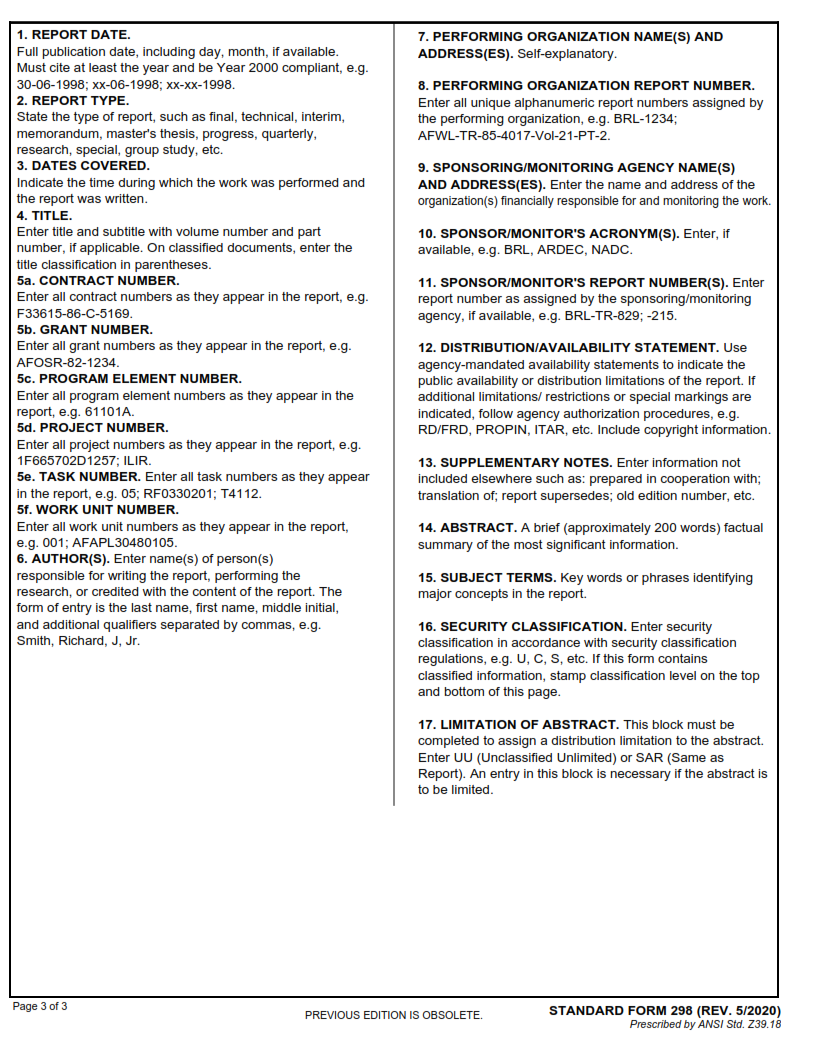SFFORMS.COM – SF 298 Form – Report Documentation Page – The SF 298 form is used to document the operational activities of a military unit. This form is used to report on the unit’s operations, personnel, equipment, and supplies. The SF 298 form is also used to provide information on casualties and damage to equipment.
Download SF 298 Form – Report Documentation Page
| Form Number | SF 298 Form |
| Form Title | Report Documentation Page |
| File Size | 32 KB |
| Date | 05/2020 |
What is an SF 298 Form?
The SF 298 form is a crucial document in government contracting. It serves as a Report Documentation Page (RDP) that summarizes information about the contract’s technical report. The RDP is used to ensure that all pertinent data related to the technical report, such as authorship, review dates, and publication details, are accurately documented.
The SF 298 form is required for any technical reports created under U.S. Government contracts and grants. It must be completed by the authors of the report and submitted with the final product upon delivery to the sponsoring agency or organization. Failure to submit an accurate SF 298 can result in delayed payments or rejection of the report altogether.
In addition to documenting key information about a technical report, use of the SF 298 form ensures standardization across different contracts and projects within federal agencies. As such, it enables better tracking of research activities across different departments and helps ensure accountability on behalf of both contractors and government clients alike.
What is the Purpose of the SF 298 Form?
The SF 298 form is a document that serves to provide necessary information and documentation for reports submitted by contractors. The purpose of the SF 298 form is to ensure that all reports are properly documented and can be tracked throughout the reporting process. This form is required by the Department of Defense (DoD) and other government agencies, as well as some private sector organizations.
The SF 298 form includes key information about the report, such as its title, author, date of submission, number of pages, and any relevant notes or comments. Additionally, it provides important administrative details like contract number and task order number. This helps ensure that all submissions are properly identified and tracked in accordance with government regulations.
In summary, the purpose of the SF 298 form is to facilitate proper documentation and tracking for reports submitted by contractors. It streamlines the reporting process while ensuring compliance with government regulations governing report submission procedures.
Where Can I Find an SF 298 Form?
The SF 298 form, also known as the Report Documentation Page, is a document that allows researchers and authors to provide important information about their reports. This form is required for all technical reports submitted to the Department of Defense (DoD). It contains details such as report title, author’s name, date of publication, sponsoring agency and contract number.
To obtain a copy of the SF 298 form, you can visit the DoD Forms website or directly access it through this link: https://www.esd.whs.mil/Portals/54/Documents/DD/forms/dd/dd0298.pdf. The website provides additional information about filling out and submitting the form. Additionally, most institutions have physical copies available at their libraries or research departments.
It is important to note that not all agencies require submission of this form with technical reports. In these cases, it may be necessary to check with your sponsor or governing agency for specific instructions regarding report documentation requirements.
SF 298 Form – Report Documentation Page
The SF 298 Form, also known as the Report Documentation Page (RDP), is a document used to provide information about a report’s authorship and publication. It is typically used in academic and government contexts where reports are frequently written and published. The form contains fields for the report title, author’s name, affiliation, date of publication, pagination, and other relevant details.
One of the key benefits of using SF 298 Form is that it ensures consistency across different reports. By standardizing the format in which they are presented, readers can more easily access and compare information across multiple documents. This makes it easier to identify trends or patterns over time.
Another advantage of using SF 298 Form is that it provides transparency around report authorship. By including details such as an author’s name and affiliation, readers can better evaluate a report’s credibility and potential biases. This level of transparency helps to build trust between authors and their audiences while promoting open science principles that benefit researchers across disciplines.
SF 298 Form Example


